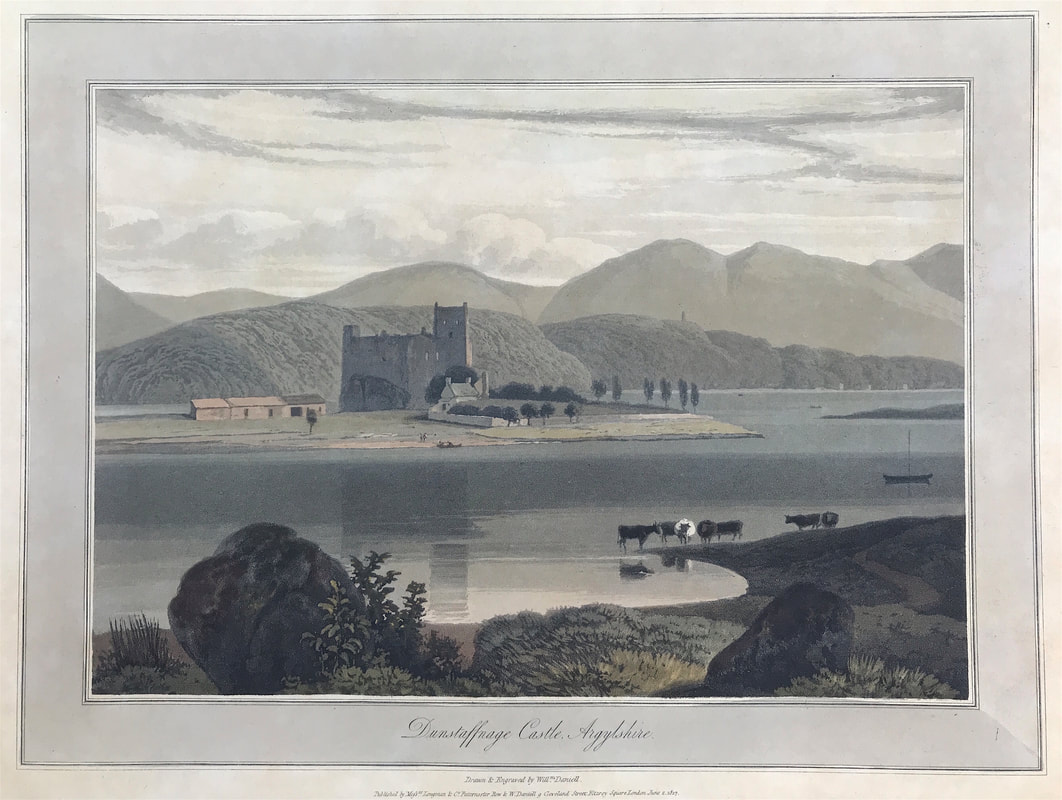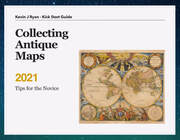|
Scotland is world famous for its castles, not just because so many are immaculately preserved but also because many are set against some of the most breathtaking scenery in Britain. Dunstaffnage Castle is a partially ruined castle in Argyll and Bute. The castle dates back to the 13th century, making it one of Scotland's oldest stone castles, in a local group which includes Castle Sween and Castle Tioram. Guarding a strategic location, it was built by the MacDougall lords of Lorn, and has been held since the 15th century by the Clan Campbell. You can google Dunstaffnage Castle and see pictures of the partial ruins that still remain today. Whats fascinating with those of us that collect old prints is we get a chance to see places at a moment in time from the past and enjoy the breathtaking scenery of that time, often a couple of hundred years ago. Here is Dunstaffnage Castle, Argylshire c1817 Drawn & Engraved by W. Daniell. Published: Dated June 2nd 1817 Longman & Co. Paternoster Row & W. Daniell, Cleveland St. Fitzroy Square, London. Another coloured aquatint from the "Voyage around Great Britain". These plates were unsurpassed for their subtle gradations of tone and their confident composition.
From William Daniell's 'A Voyage Round Great Britain', a series of 308 aquatints published in eight volumes between 1814-1825, described by R.V. Tooley as 'the most important colour plate book on British Topography'. William Daniell's A Voyage Round Great Britain was the most ambitious of the many topographical publications produced in England during the early nineteenth century and its plates are a highpoint in the history of aquatint engraving. You can see the full details of this aquatint by William Daniell HERE |
LEARN ABOUT MAPS Where to Start? The Paper Earliest Maps Whats on the Paper? Rectum & Recto Marketing Devices Why Changing Faces? What is Ornamentation? Why all those lines? The Embellishment Story Illogical Prices Explained A Reference Library CLICK THE BOOK
Get the FREE Guide!
COLLECTING MAPS
Size Matters! Celestial Maps Strip Road Maps Sea Charts On the River of Life Projections The Sea Monsters Thematic Maps Town Plans Buy with Confidence. . .
More Top Tips for the Novice. Click the book to find out more . . .
COLLECTING PRINTS
Views of River Thames
Views of London Shipping & Craft Meet the Fairies Maritime Naval Military Battles Botanical Historic Churches Historic Views of Rome Archives
May 2024
|



